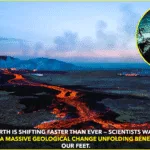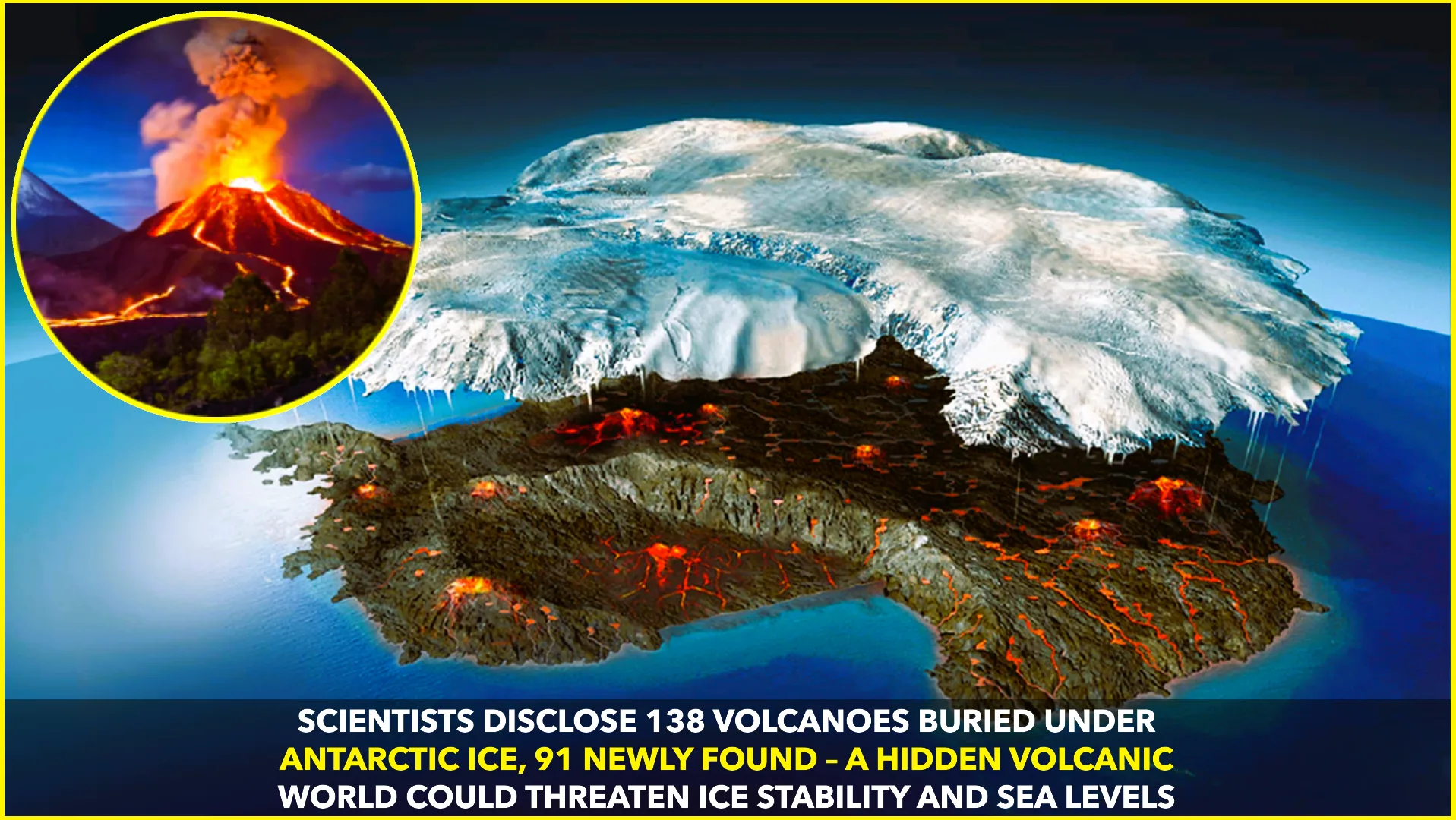In a remarkable discovery, researchers have mapped 138 volcanoes hidden beneath Antarctica’s ice, including 91 previously unknown peaks, mostly beneath West Antarctica where the ice lies atop deep bedrock below sea level. This finding suggests the continent hosts one of the densest volcanic systems on Earth.
The study, led by the University of Edinburgh, employed a combination of ice-penetrating radar, satellite imagery, and topographic mapping techniques to peer through kilometers of ice and reconstruct the hidden landscape. These tools revealed cone-shaped structures consistent with volcanic edifices, even though they lie entirely buried beneath the ice. Science News Explores+3Live Science+3ScienceAlert+3
Some of these buried giants rival the height of the Alps—reaching up to 13,000 feet (≈ 3,850 meters). The previously known volcanoes in Antarctica numbered around 47; discovering an additional 91 nearly triples the known underground volcanic inventory in that part of the continent. Live Science+2ScienceAlert+2
Most of these volcanoes appear dormant or inactive, but their existence matters deeply. The West Antarctic Ice Sheet, whose base hosts these volcanoes, contains enough water to potentially raise global sea levels by as much as 10 feet (≈ 3 meters) if fully melted. Even a modest increase in basal melting—driven by geothermal heat from volcanic zones—could destabilize ice flow and accelerate sea-level rise. The Guardian+3ScienceAlert+3Discover Magazine+3
Because ice acts as a heavy blanket over the crust, its weight suppresses underlying geological pressure. As climate change causes the ice sheet to thin, this relief of pressure could encourage magma movement and awaken dormant volcanoes. The interplay between ice loss and volcanic activity raises concern over feedback loops that could further drive melting. Science News Explores+2ScienceAlert+2
This discovery challenges the long-held view of Antarctica as a dormant, frozen landmass. Instead, it emerges as a geologically active continent where heat from its interior continues to shape the dynamics of its ice cover—and, by extension, the future of coastal regions globally. The Guardian+2ScienceAlert+2
Researchers emphasize that more work is needed to assess which of these volcanoes might still be active, how much heat they produce, and how they interact with the overlying ice. But even at this stage, the revelation underscores the fragile and complex balance between Earth’s geosphere, cryosphere, and climate system.










